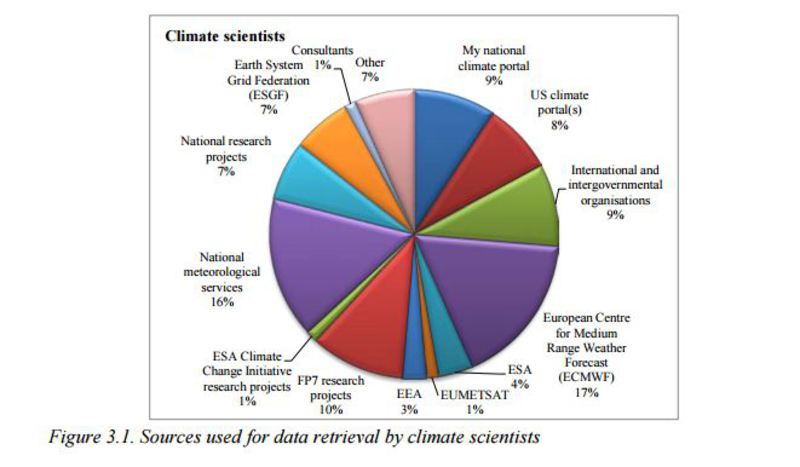D2.2 User requirements, Part 2
Objectives
This deliverable aims to describe and discuss the results of an inquiry concerning specific needs for climate data and impact indicators of different user categories. These user requirements will guide developers in the further design of the CLIPC portal and indicator toolbox. The methods that have been applied in the inquiry include an online survey, interviews and a user requirement workshop.
the results of an inquiry concerning specific needs for climate data and impact indicators of different user categories. These user requirements will guide developers in the further design of the CLIPC portal and indicator toolbox. The methods that have been applied in the inquiry include an online survey, interviews and a user requirement workshop.
Results
All user groups indicate that access to information on the portal should be free and open and that it is important to create a sustainable portal with regular updates. There is a need for data of high (scientific) quality, data in a specific format, high resolutionresolution
In climate models, this term refers to the physical distance (meters or degrees) between each point on the grid used to compute the equations. Temporal resolution refers to the time step or the time elapsed between each model computation of the equations. data and metadatametadata
Information about meteorological and climatological data concerning how and when they were measured, their quality, known problems and other characteristics.. Users also require tools to transform and visualize the data with post-processing tools. CLIPC should address the issue of standardisation of tools, colours and formats as well as harmonization of grids, calendars and treatment of leap years. Especially the need for a ‘guided search’ functionality of the CLIPC portal, including a help desk function and the use of case studies have been stressed. Personalization of the portal through e.g. the possibilities to save queries would add value to the CLIPC portal. The interviewees indicate to have a need for a sustainable portal with regular updates of climate information and research finding.
With a multitude of existing portals providing access to different sources of climate information, CLIPC should avoid redundancy with other portals. Therefore, most likely CLIPC will provide direct access to a number of reliablereliable
A characteristic of a forecast system for which the probabilities issued for a specific event vary a proportion of times equal to the climatological frequency of the event. A reliable system which predicts, for example 50% (or 20%, or 73%) probability of rain ,should, on average, be correct 50% (or 20%, or 73%) of the times, no more, no less.
core data sources, harmonized metadata and a set of post-processing tools, and indirect access to additional data sets. The added value would then be provided by a comprehensive overview of data supply, type of indicator availability and guidance. The combination of satellite and ground-based data and modelling results will also be an asset compared to what already exists.
Perspectives
The deliverable has set the foundation for much of the work ahead. Some of the findings and recommendations presented can immediately be taken into consideration by the developers of the portal. Specific design challenges include:
- Different user layers allowing all types of users to navigate through the portal
- Layers for direct data access and links to ancillary information
- A (personalized) selection and browsing tool to maximize user friendliness
Feedback events are planned to enable users to assess new portal releases which will further shape the development of the CLIPC information portal.